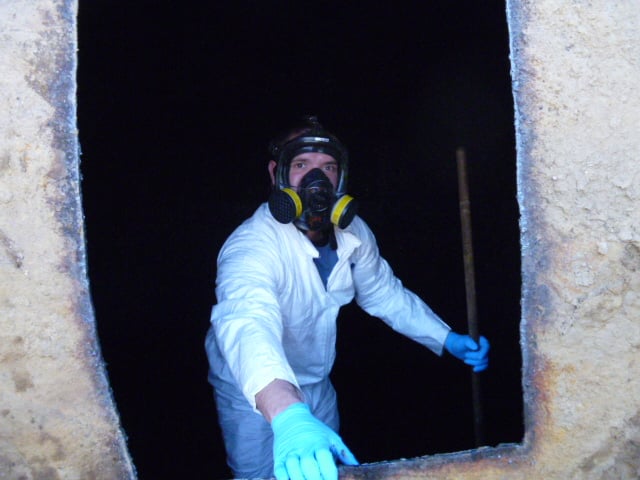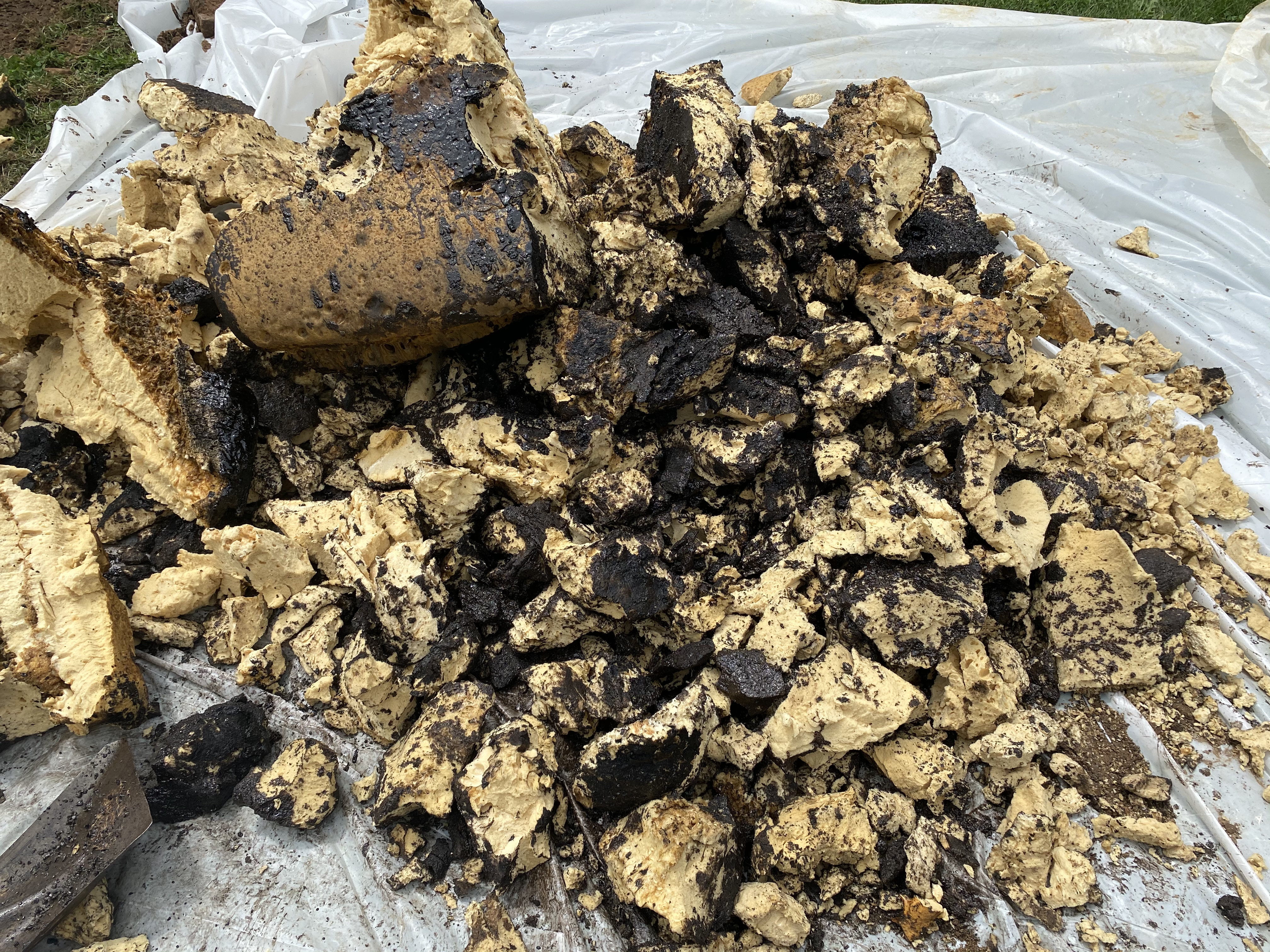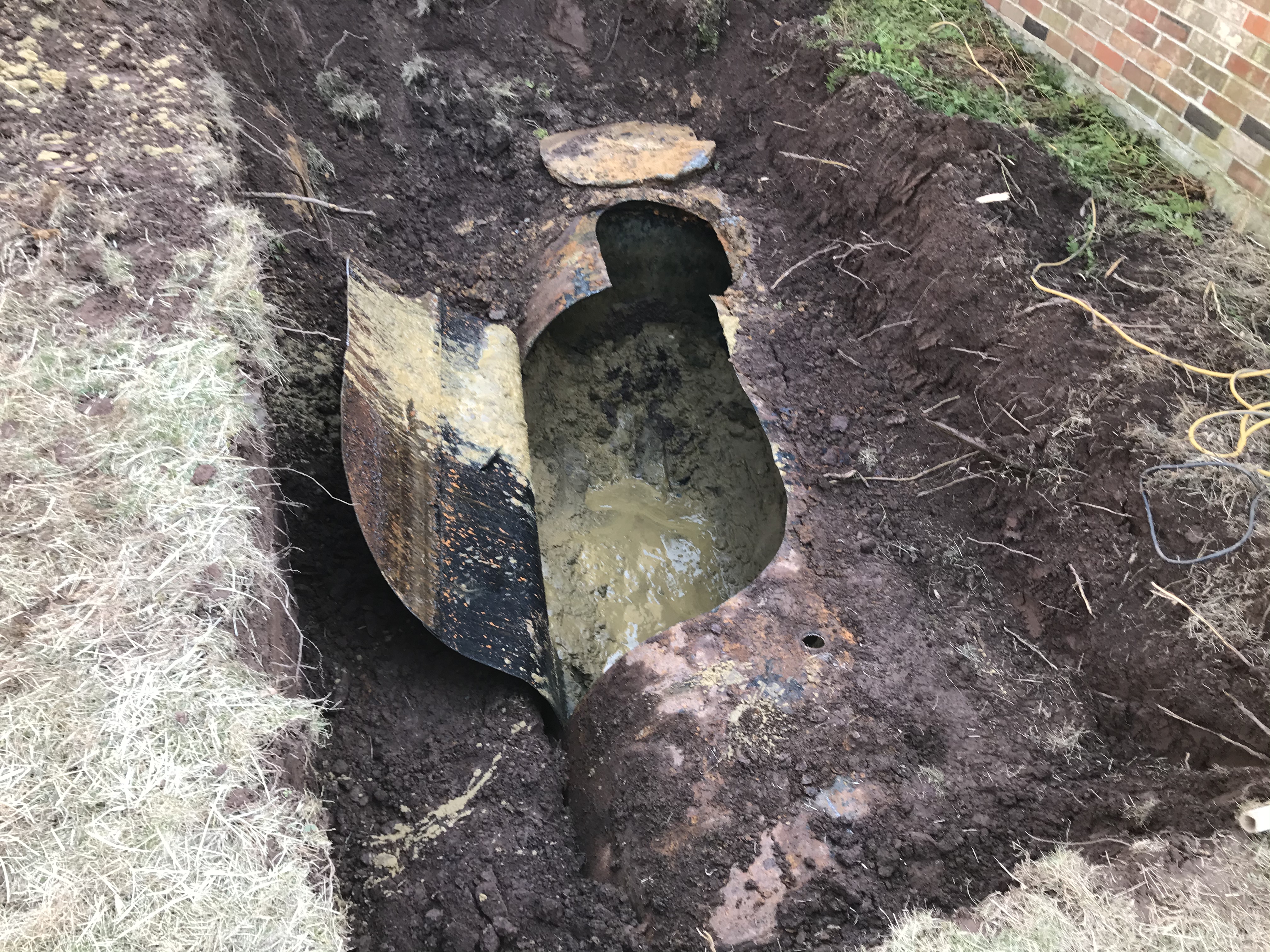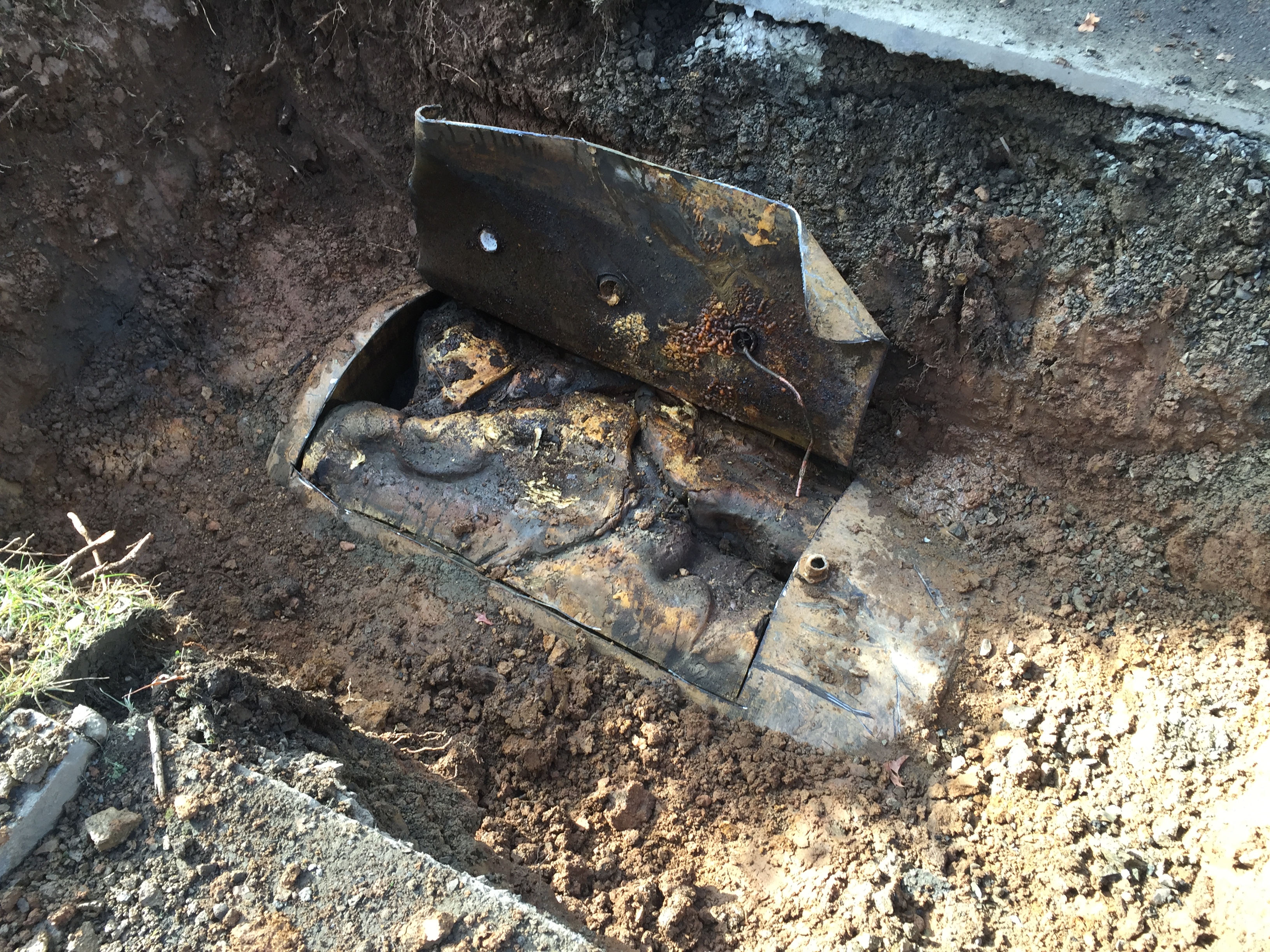Why are tanks improperly abandoned in place?
How do I know if the tank was abandoned properly?
Because the homeowner nor the company doing the work knew what they were doing, this is very common pre 2005, because of the following 3 reasons.
- Work was performed by an HVAC or plumbing company not an environmental company.
- The homeowner may not have wanted soil testing performed because they did not want to find a problem. Meaning, leave the tank in the ground this way I will not see any holes in the tank.
- Training: Technically to clean a tank you must go inside the tank, meaning you need proper PPE, OSHA training and knowledge of API (American Petroleum Institute) tank cleaning procedures. All this means specialized equipment and training and cost for the company who if they are not an environmental company are not going to invest in it if they only do a few tanks a year.

Tank was not cleaned
Photo below is a perfect example of a tank that was filled with sand but the oil was left in the tank. You can see the oil sitting on top of the dirt in the tank.

This tank was filled with foam, again never cleaned of oil. You can see the oil on the foam.

This is oil contaminated foam the property owner had to pay to dispose of.

Tank was not entered and cleaned
The photo below shows wet sand and black oil on the sand. Look at the photo closely, you will see a small Circle shaped hope cut into the tank. This small opening was cut into the tank when it was filled with sand, clearly the hole was not big enough for a human to go through, hence why the tank was never cleaned. The much larger opening (Flap) was cut into the tank by Curren, you need a larger opening like this to actually clean the tank.

Another foam filled tank that was not cleaned
Another tank that was filled with sand and never cleaned. You can see the red oil floating on top of the tank. Sadly the rest of the oil floated up and out the hole that was used to fill the tank with sand.
Ask the experts
This soil pile requires special comment, it was the material removed from a filled in place tank.

It is wet, because of the bath tub effect. Meaning tank a cylinder, cut a hole in the top of it, then fill cylinder (oil tank) with sand. Wait a year for multiple rain events to fill the tank with water, making the sand wet. Now corrosion occurs 10x faster than normal.
So when you remove an abandoned filled in place tank, expect many holes in the tank.

Bottom line if you are looking at selling or buying a property with an abandoned in place tank, you better have the documentation detailing that the work was done properly and documenting the tank did not leak.




